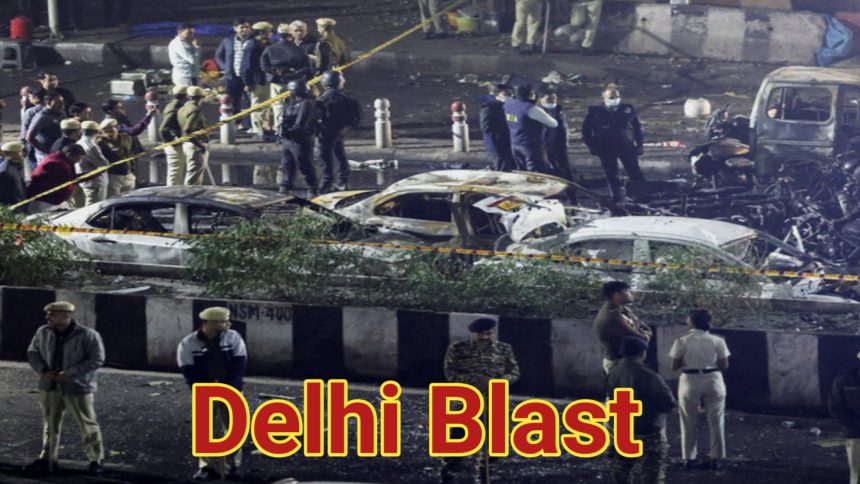Blast Near Red Fort Leaves Delhi on Edge
By | Arvind Jadhav
New Delhi: A powerful car explosion near Delhi’s historic Red Fort on 10 November 2025 killed several people and injured dozens, triggering one of the most extensive terror investigations in recent years. The blast, caused by a vehicle-borne improvised explosive device (VBIED) inside a Hyundai i20, shook the high-security zone and immediately pointed to a planned terror attack.
Bomber Identified as Dr Umar Un Nabi
Forensic teams confirmed that the suicide bomber behind the explosion was Dr Umar Un Nabi, also known as Umar Mohammad, a native of Pulwama, Jammu & Kashmir. DNA samples matched with his family confirmed his identity. Umar, aged in his early 30s, worked as an Assistant Professor at Al-Falah University in Faridabad, making the case more alarming due to his professional background. His family described him as an “introvert” with limited social circles.
How the Attack Was Carried Out
According to investigators, Umar drove a Hyundai i20 loaded with explosives—primarily ammonium nitrate, detonators, and other materials used in a typical IED setup. CCTV footage tracked his movements across nearly 50 locations in the capital. Hours before the blast, he parked near Sunehri Masjid, remaining inside the vehicle without stepping out. The nature of the blast suggests that Umar executed the attack himself, possibly after panicking due to the arrest of his associates.
NIA Takes Over and Expands the Investigation
The National Investigation Agency (NIA) took over the case within hours. Initial findings indicate that Umar was part of a white-collar terror module of highly educated individuals, including other medical professionals. Investigators believe the group raised about ₹20 lakh to fund their operations, and coordinated through encrypted groups on the Signal app.
Links to Global Terror Networks
Intelligence sources have revealed possible connections to Jaish-e-Mohammad (JeM), the Pakistan-based terror outfit. Early investigation also suggests that Umar’s “handlers” were operating from Turkey and Afghanistan’s Nangarhar region, known for radical networks. Prior operations in Faridabad and J&K had exposed related modules that amassed nearly 2,900 kg of explosives, adding weight to the theory of a larger network.
Big Arrests and Evidence Seized
The NIA has arrested Amir Rashid Ali, a Kashmiri man accused of procuring the i20 car used in the blast and supporting Umar in planning the attack. Another vehicle owned by Umar was seized for forensic examination. Authorities believe at least eight individuals were planning coordinated explosions across four major locations in India, indicating the terror strike was part of a larger, multi-city conspiracy.
Motive and Last Movements
Investigators suggest that Umar may have acted prematurely after sensing heat from ongoing arrests. Evidence hints that he may have attempted to flee but, unable to escape with the explosive material, chose to detonate it himself. Analysts believe the attack was meant either as a major symbolic strike near one of India’s most iconic monuments or as part of a coordinated series of blasts.
Aftermath and Government Response
Following the blast, security agencies intensified surveillance across Delhi and other major cities. The Indian government condemned the act as a “cowardly terror attack” and vowed strict action against those responsible. Umar’s family home in Pulwama was demolished as part of anti-terror measures. The NIA has so far questioned over 70 witnesses, including injured victims, locals, and possible accomplices.
Probe Continues as Agencies Track Wider Module
With multiple leads suggesting deeper terror networks, the investigation into the Delhi blast remains active and expanding. Security agencies expect more arrests in the coming weeks as they continue unraveling the financial, technological, and international linkages behind Umar’s radicalisation and the deadly attack.






